1. Introduction to Islamic Calligraphy
Islamic calligraphy, an artistic practice that dates back to the 7th century, is a visually captivating and culturally significant form of writing. Rooted deeply in the Quranic tradition, Islamic calligraphy transcends mere decoration; it embodies a spiritual journey of artistic expression and devotion. Unlike Western calligraphy, which often focuses on the alphabet, Islamic calligraphy emphasizes the beauty of the Arabic script. This art form has evolved through centuries, influenced by various regions and cultures, each contributing to its diverse styles and techniques. The intricate designs, flowing lines, and meticulous attention to detail make Islamic calligraphy a unique and revered form of visual art that continues to inspire and mesmerize audiences worldwide.
Islamic calligraphy holds a prestigious place in the world of visual art, often adorning mosques, manuscripts, and architectural structures with its elegant and intricate designs. This form of art is not just about writing; it is about conveying the divine message of the Quran through beautifully crafted script. The development of different styles, such as Kufic, Naskh, Thuluth, and Diwani, showcases the versatility and adaptability of Islamic calligraphy across various contexts and purposes. Each style has its distinct characteristics and techniques, reflecting the artistic heritage and cultural nuances of the regions they originate from. Through the use of tools like the reed pen (qalam) and specially prepared ink, calligraphers achieve a harmony of form and function, creating pieces that are as much about the aesthetic experience as they are about spiritual and cultural significance.
2. Early Beginnings: The Origin of Islamic Calligraphy
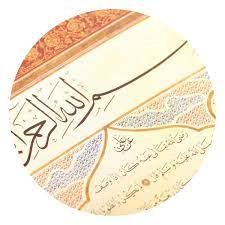
The origins of Islamic calligraphy can be traced back to the early 7th century with the advent of Islam. As the Quran was revealed, there was a significant need to document the divine words in a written form that reflected their sacredness. The earliest form of Islamic calligraphy, known as Kufic script, emerged in this period, characterized by its angular, geometric shapes and lack of diacritical marks. Kufic was initially used for Quranic manuscripts, inscriptions on coins, and architectural elements. The simplicity and boldness of Kufic script allowed for clear readability and durability, which were essential for the preservation of the holy text and its dissemination across the rapidly expanding Islamic empire.
As Islamic calligraphy evolved, it became deeply intertwined with the cultural and intellectual advancements of the Islamic Golden Age. The Abbasid Caliphate, with its capital in Baghdad, became a thriving center for arts and sciences, fostering the development of new calligraphic styles. During this period, the Naskh script was developed by Ibn Muqlah and later refined by Ibn al-Bawwab. Naskh script, with its rounded and flowing letters, allowed for greater readability and was better suited for the transcription of lengthy texts, including the Quran and scientific treatises. The refinement and standardization of calligraphic styles during this time laid the foundation for the rich diversity and sophistication of Islamic calligraphy that continues to captivate audiences today.
3. The Kufic Script: The Oldest Calligraphic Form
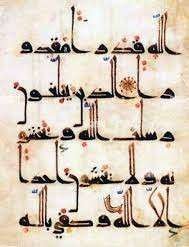
The Kufic script, the oldest calligraphic form in Islamic calligraphy, holds a revered place in the history of Islamic art. Originating in the city of Kufa in modern-day Iraq during the 7th century, Kufic script was the primary style used in early Quranic manuscripts and is characterized by its angular, linear form and horizontal orientation. This script is distinguished by its strong, geometric shapes and well-defined strokes, often devoid of the diacritical marks that are commonly seen in later scripts. The simplicity and austerity of Kufic script reflect the early Islamic emphasis on clarity and durability, making it an ideal choice for inscribing sacred texts, coins, and monumental architecture.
The aesthetic appeal of Kufic script lies in its harmonious balance and symmetry, which lends itself well to decorative purposes beyond the mere transcription of texts. Early Islamic calligraphers used Kufic script to create intricate patterns and motifs, incorporating it into the design of architectural elements such as mosaics, friezes, and ceramic tiles. This adaptability allowed Kufic script to become a fundamental aspect of Islamic visual culture, merging textual and ornamental elements seamlessly. The script’s bold and dignified appearance made it a favored choice for religious and official inscriptions, ensuring its prominence across the Islamic world.
Over time, Kufic script diversified into various regional styles, each with its own distinct characteristics. Some variations included the addition of floral and geometric embellishments, enhancing the script’s decorative potential. Despite the emergence of other calligraphic forms, such as Naskh and Thuluth, Kufic script maintained its significance as a symbol of Islamic heritage. Its enduring legacy can be seen in contemporary Islamic art and design, where modern artists and calligraphers continue to draw inspiration from its timeless beauty and historical importance. The Kufic script, as the oldest form of Islamic calligraphy, serves as a testament to the rich cultural and artistic heritage of the Islamic world.
4. The Rise of Naskh: A Revolution in Legibility
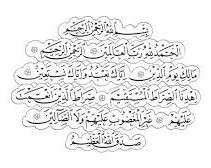
The rise of Naskh script marked a significant revolution in the legibility and accessibility of Islamic calligraphy, transforming the way texts were written and read. Developed in the 10th century during the Abbasid caliphate, Naskh script emerged as a response to the need for a more readable and practical script for everyday use. Unlike the angular and rigid Kufic script, Naskh is characterized by its rounded, cursive letters and fluid lines, which made it easier to write and read. The evolution of Naskh script was driven by the demands of a rapidly expanding Islamic empire, where clear and efficient communication became essential for administration, education, and the dissemination of knowledge.
Naskh script quickly gained popularity for copying the Quran, legal documents, scientific treatises, and literary works. Its smooth and elegant form allowed for greater precision and consistency, making it an ideal choice for scribes and scholars. The standardized proportions of Naskh script, with evenly spaced letters and consistent line heights, enhanced its readability and aesthetic appeal. The script’s legibility was further improved by the use of diacritical marks and vowel signs, which clarified pronunciation and meaning. This made Naskh script an indispensable tool for preserving and transmitting the rich intellectual and cultural heritage of the Islamic world.
The influence of Naskh script extended beyond the Arabic-speaking regions, impacting the development of other calligraphic styles in Persian, Ottoman, and Mughal cultures. As Naskh script evolved, it gave rise to various regional adaptations and innovations, each adding unique nuances and flourishes while maintaining the core principles of clarity and elegance. Prominent calligraphers such as Ibn Muqlah and Ibn al-Bawwab played crucial roles in refining Naskh script, setting the standards for its proportional system and aesthetic harmony. Their contributions cemented Naskh’s status as a foundational script in Islamic calligraphy, revered for its balance of beauty and functionality.
In modern times, Naskh script continues to be widely used in print and digital media, demonstrating its enduring relevance and adaptability. Its timeless elegance and practicality make it a preferred choice for Quranic texts, educational materials, and official documents. The rise of Naskh script represents a pivotal moment in the history of Islamic calligraphy, showcasing the dynamic interplay between artistic expression and practical necessity. As a cornerstone of Islamic calligraphy, Naskh script embodies the harmonious blend of form and function, reflecting the profound cultural and intellectual achievements of the Islamic civilization.
5. Thuluth Script: Elegance in Large Scale

Thuluth script is renowned for its grandiose elegance and has become one of the most celebrated forms of Islamic calligraphy, especially in large-scale inscriptions. Developed in the 9th century, Thuluth script emerged during the Abbasid Caliphate and has since been esteemed for its majestic and flowing style. The name “Thuluth” means “one-third” in Arabic, referring to the proportion of the pen’s width used in the script, which creates its distinctively large and curved letters. This script is characterized by its elongated vertical strokes, sweeping curves, and meticulously balanced proportions, which lend a sense of rhythm and harmony to the written text.
Thuluth script’s aesthetic appeal and legibility have made it a favored choice for architectural decorations, monumental inscriptions, and religious manuscripts. Its grand scale and fluidity allow it to be easily read from a distance, making it ideal for adorning mosques, minarets, and public buildings with Quranic verses and other significant texts. The script’s intricate design and artistic flexibility enable calligraphers to create visually stunning compositions that captivate viewers and convey a sense of spiritual reverence. The versatility of Thuluth script also extends to its use in calligraphic panels, tiles, and various decorative arts, where it enhances the beauty and elegance of the surroundings.
Mastery of Thuluth script requires exceptional skill and precision, as the calligrapher must maintain the delicate balance between the script’s ornate complexity and its functional readability. Renowned calligraphers such as Ibn Muqlah and Ibn al-Bawwab played pivotal roles in refining Thuluth script, setting the standards for its proportional system and aesthetic principles. Their contributions have left a lasting legacy, inspiring generations of calligraphers to explore the artistic potential of Thuluth script. The script’s visual dynamism is achieved through a careful interplay of thick and thin lines, dramatic flourishes, and harmonious spacing, resulting in compositions that are both visually engaging and spiritually uplifting.
In contemporary times, Thuluth script continues to be a prominent and influential style in Islamic calligraphy. Its timeless elegance and grandeur make it a popular choice for modern artworks, digital media, and various forms of visual communication. Calligraphers and artists today draw inspiration from the rich heritage of Thuluth script, exploring innovative ways to incorporate its classic elements into contemporary designs. The enduring appeal of Thuluth script lies in its ability to convey profound messages with grace and dignity, reflecting the spiritual and cultural values of the Islamic tradition. As a testament to the beauty and sophistication of Islamic calligraphy, Thuluth script remains a symbol of artistic excellence and a source of inspiration for future generations.
6. The Grace of Diwani: The Ottoman Influence

The Diwani script, known for its intricate beauty and elegance, is a testament to the artistic achievements of Islamic calligraphy during the Ottoman Empire. Developed in the 16th century under the patronage of Sultan Suleiman the Magnificent, Diwani script epitomizes the grace and sophistication of Ottoman calligraphic tradition. Its name, “Diwani,” is derived from the Arabic word “Diwan,” meaning “royal court,” reflecting its exclusive use for state documents, official decrees, and correspondence within the Ottoman administration. The script’s ornate and decorative nature made it a symbol of prestige and authority, used to convey important messages with an air of grandeur and formality.
Diwani script is characterized by its fluid lines, intricate curves, and dense composition, creating a sense of movement and dynamism. The letters are often interconnected, with elaborate flourishes and embellishments that fill the space between the words, resulting in a richly textured and visually captivating writing style. This interconnectedness and the lack of strict baseline contribute to its highly decorative appearance, making Diwani script one of the most visually striking forms of Islamic calligraphy. The script’s aesthetic appeal lies in its harmonious balance between the bold strokes and delicate details, showcasing the calligrapher’s skill and artistry.
The elegance of Diwani script made it a preferred choice for various artistic and ceremonial purposes beyond official documentation. It was frequently employed in the decoration of palaces, mosques, and other significant buildings, where its intricate patterns adorned walls, domes, and ceilings. The script’s decorative elements were also incorporated into textiles, ceramics, and other forms of Islamic art, adding a touch of sophistication and refinement. Diwani script’s versatility allowed it to be adapted to different media and scales, from grand architectural inscriptions to delicate manuscript illuminations, demonstrating its enduring appeal and artistic flexibility.
The Ottoman influence on Diwani script extended to its stylistic development and codification. Master calligraphers of the Ottoman court, such as Shaykh Hamdullah and Hâfız Osman, played crucial roles in refining and popularizing the script. They established the rules for its proportions, letterforms, and ornamental features, ensuring consistency and elegance in its execution. Their contributions laid the foundation for the script’s continued evolution and its transmission to subsequent generations of calligraphers. The meticulous training and apprenticeship system within the Ottoman calligraphic tradition ensured that the knowledge and techniques of Diwani script were preserved and passed down through the centuries.
In contemporary times, Diwani script continues to be celebrated for its aesthetic charm and historical significance. It remains a source of inspiration for modern calligraphers and artists who seek to explore the artistic possibilities of Islamic calligraphy. The script’s intricate beauty and graceful lines continue to captivate audiences, transcending cultural and temporal boundaries. Diwani script stands as a testament to the rich cultural heritage of the Ottoman Empire and its enduring legacy in the world of Islamic calligraphy. As an emblem of elegance and refinement, Diwani script embodies the artistic excellence and cultural sophistication of the Islamic calligraphic tradition.
7. Nasta'liq Script: The Persian Artistry
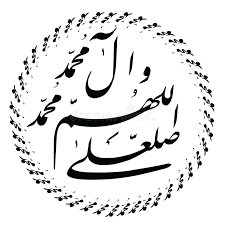
Nasta’liq script, a hallmark of Persian artistry, is one of the most visually appealing and widely revered styles in Islamic calligraphy. Originating in the 14th century, Nasta’liq was developed and perfected by Persian calligraphers who sought to create a script that was not only beautiful but also practical for writing Persian poetry and prose. This script is characterized by its fluid, flowing lines, and its distinctive slant, which gives it an elegant and dynamic appearance. The name “Nasta’liq” itself is derived from two words: “Naskh” and “Ta’liq,” indicating that it combines elements of these earlier scripts while transcending them in its unique aesthetic.
Nasta’liq’s visual charm lies in its harmonious balance between thick and thin strokes, creating a rhythmic and graceful composition. The letters are often elongated and connected, with subtle variations in their curvature that add a sense of movement and lyricism. This script is particularly noted for its “suspended” letters that seem to float above the baseline, contributing to its ethereal quality. The proportions of the letters in Nasta’liq are meticulously calculated, ensuring that each character maintains its distinctiveness while blending seamlessly with others to form a coherent and pleasing whole. This careful attention to proportion and balance is a testament to the mathematical precision and artistic sensibility of Persian calligraphers.
The development of Nasta’liq is closely linked with the cultural and artistic renaissance of the Timurid and Safavid dynasties in Persia. Master calligraphers like Mir Ali Tabrizi and Sultan Ali Mashhadi were instrumental in refining and popularizing this script. Their works, often used to transcribe classical Persian literature and poetry, exemplify the script’s potential for artistic expression. The poetry of renowned Persian poets like Hafez, Saadi, and Rumi found an ideal visual counterpart in Nasta’liq, where the beauty of the words was matched by the elegance of the script. The synergy between poetic content and calligraphic form in Nasta’liq underscores the deep connection between language and art in Persian culture.
Nasta’liq’s influence extended beyond Persia, impacting the calligraphic traditions of neighboring regions, including the Indian subcontinent and Ottoman Turkey. In Mughal India, Nasta’liq was adopted and adapted by local calligraphers, becoming a prominent script in courtly manuscripts and architectural inscriptions. The Mughals, known for their patronage of the arts, produced exquisite examples of Nasta’liq calligraphy that adorned everything from illuminated manuscripts to the walls of grand mosques and palaces. Similarly, in the Ottoman Empire, Nasta’liq was esteemed for its beauty and used in various artistic and decorative contexts, further cementing its place in the broader canon of Islamic calligraphy.
In contemporary times, Nasta’liq continues to be celebrated for its artistic and cultural significance. Modern calligraphers and artists draw inspiration from this classical script, experimenting with its forms and applying it to new media and artistic expressions. The timeless beauty of Nasta’liq ensures its enduring appeal, as it remains a symbol of Persian artistry and a testament to the rich heritage of Islamic calligraphy. Through exhibitions, workshops, and digital platforms, Nasta’liq script continues to captivate audiences around the world, bridging past and present, tradition and innovation, in the ever-evolving landscape of visual art.
8. Modern Islamic Calligraphy: Blending Tradition with Innovation
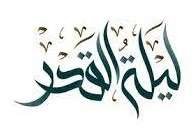
Modern Islamic calligraphy represents a dynamic fusion of traditional elements with contemporary artistic practices, creating a vibrant and evolving art form that resonates with today’s audiences. Rooted in centuries-old traditions, modern Islamic calligraphy maintains the spiritual and aesthetic principles of its classical predecessors while embracing new materials, techniques, and conceptual approaches. This blend of tradition and innovation has allowed calligraphers to push the boundaries of their craft, exploring new ways to express the beauty and significance of the Arabic script.
One of the key aspects of modern Islamic calligraphy is the experimentation with different mediums and surfaces. Traditional calligraphy was typically executed on paper, parchment, or architectural surfaces, but contemporary artists have expanded this repertoire to include a wide range of materials such as canvas, wood, metal, and even digital platforms. This diversification has opened up new possibilities for creative expression, allowing calligraphers to explore textures, colors, and forms that were previously unattainable. For instance, artists like Hassan Massoudy and eL Seed have gained international acclaim for their large-scale murals and installations that blend calligraphy with graffiti art, transforming urban landscapes into living canvases for Islamic calligraphy.
In addition to material experimentation, modern Islamic calligraphy often incorporates abstract and symbolic elements that go beyond the mere representation of text. Calligraphers like Shirin Neshat and Mohamed Zakariya use the Arabic script as a basis for exploring deeper themes related to identity, spirituality, and cultural heritage. Their works frequently combine calligraphy with other visual elements, such as photography and painting, creating multi-layered compositions that invite viewers to engage with the artwork on multiple levels. This approach not only enriches the visual impact of the calligraphy but also imbues it with contemporary relevance, making it accessible to diverse audiences across different cultural contexts.
The digital age has also significantly influenced modern Islamic calligraphy, offering new tools and platforms for artists to explore. Digital calligraphy software and graphic design applications have enabled calligraphers to experiment with precise and intricate designs, manipulating the script in ways that were previously impossible. Online galleries, social media, and virtual exhibitions have provided new avenues for sharing and disseminating Islamic calligraphy, reaching global audiences and fostering a sense of community among calligraphers and art enthusiasts. This digital shift has democratized access to calligraphy, allowing artists from different backgrounds to connect, collaborate, and innovate.
Moreover, modern Islamic calligraphy has become a medium for cross-cultural dialogue and artistic exchange. Artists from different parts of the world have drawn inspiration from Islamic calligraphy, incorporating its principles into their own artistic practices and creating hybrid forms that reflect a blend of influences. This cross-pollination of ideas has led to the emergence of unique styles and techniques that celebrate the universality of artistic expression. Workshops, residencies, and collaborative projects have further facilitated this exchange, promoting a deeper understanding and appreciation of Islamic calligraphy across different cultural and artistic landscapes.
Despite these innovations, the core values and techniques of traditional Islamic calligraphy remain integral to its modern iterations. The meticulous practice of penmanship, the harmonious balance of letters, and the spiritual significance of the script continue to guide contemporary calligraphers in their work. This continuity ensures that modern Islamic calligraphy retains its authenticity and connection to its rich historical heritage, even as it evolves and adapts to the changing artistic environment. By blending tradition with innovation, modern Islamic calligraphy not only preserves the legacy of this ancient art form but also ensures its continued relevance and vitality in the contemporary world.
9. Tools and Materials in Islamic Calligraphy

In Islamic calligraphy, the tools and materials are as significant as the technique and style, playing a crucial role in the creation of beautiful and precise works of art. The choice of tools and materials can affect the texture, fluidity, and overall aesthetic of the calligraphy, making it essential for calligraphers to select their instruments with care and expertise. This detailed exploration of the tools and materials used in Islamic calligraphy highlights their importance and the meticulous attention to detail required to master this ancient art form.
One of the primary tools in Islamic calligraphy is the reed pen, known as “qalam” in Arabic. The qalam is traditionally made from a dried reed or bamboo stalk, carefully cut and shaped to create a nib of varying widths. The nib’s shape and size determine the thickness and style of the strokes, allowing calligraphers to achieve a range of effects, from delicate hairlines to bold, and sweeping curves. The process of crafting a qalam involves precise cutting and carving, often using a sharp knife or blade to create the desired nib angle and shape. This customization allows calligraphers to tailor their pens to their specific needs and preferences, ensuring that their writing is both fluid and expressive.
The ink used in Islamic calligraphy, known as “midad” or “siyahi,” is another essential component. Traditional inks are often made from natural materials, such as soot from burning oils or resins mixed with water and gum arabic to create a smooth, viscous liquid. This ink is prized for its rich, deep black color and its ability to flow smoothly from the pen, enabling calligraphers to create clean, precise lines. In addition to black ink, calligraphers may use colored inks to add visual interest and variety to their work. These colored inks can be made from a range of natural pigments, including plant extracts, minerals, and metals, each providing a unique hue and texture.
Paper is another crucial material in Islamic calligraphy, with its quality and texture significantly impacting the final result. Historically, calligraphers used a variety of surfaces, including parchment, vellum, and papyrus, but paper became the preferred medium due to its smooth texture and absorbency. The best paper for calligraphy is typically handmade, with a fine, even surface that allows the ink to flow smoothly and adhere properly without bleeding or smudging. Some calligraphers also prepare their paper with a coating of starch or alum to enhance its smoothness and durability. Additionally, gold leaf and other decorative elements may be applied to the paper to create intricate and luxurious designs, particularly in illuminated manuscripts and other high-end works.
Beyond the basic tools of pen, ink, and paper, Islamic calligraphers also use a range of auxiliary tools to aid in their work. These may include rulers and compasses for creating precise geometric patterns, as well as burnishers for polishing the paper and enhancing the ink’s shine. Some calligraphers also use brushes, known as “buraq,” particularly for larger works or more expressive styles. Brushes allow for greater variation in line width and texture, enabling calligraphers to achieve a more dynamic and fluid appearance.
In summary, the tools and materials used in Islamic calligraphy are integral to the art form, influencing the appearance and quality of the final work. The qalam, with its carefully crafted nib, allows for precise and expressive writing, while the ink provides depth and richness to the strokes. The choice of paper and additional decorative elements further enhances the calligraphy, creating a harmonious and visually appealing composition. Understanding and mastering these tools and materials is essential for any calligrapher seeking to create beautiful and meaningful works of Islamic calligraphy.
10. Techniques in Islamic Calligraphy

Islamic calligraphy is a revered and intricate art form that has evolved over centuries, becoming central to Islamic culture and religious expression. This artistic tradition involves writing Arabic script in a highly stylized and visually captivating manner, often used to transcribe verses from the Quran, poetry, and other significant texts. The techniques employed in Islamic calligraphy are diverse, reflecting the historical, cultural, and regional variations within the Islamic world.
The primary tool for Islamic calligraphy is the qalam, a reed pen cut at an angle to produce thick and thin lines. The width and angle of the nib can vary, allowing for different styles and scripts. Traditionally, ink used in Islamic calligraphy is made from natural materials, such as soot mixed with water and gum arabic. While black ink is most common, colored inks like gold, blue, and red are also used for emphasis. High-quality paper or parchment is essential for calligraphy, as the surface must be smooth to allow the qalam to glide effortlessly.
Islamic calligraphy encompasses various styles, each with unique characteristics. Kufic, one of the oldest styles, is known for its angular, geometric shapes and strong, bold lines, primarily used in early Quranic manuscripts. Naskh, a more cursive script, became the standard for copying the Quran due to its readability, featuring rounded forms and high legibility. Thuluth, known for its large, elegant curves and intricate design, is often used in architectural inscriptions and decorative arts. Diwani, developed in the Ottoman Empire, is a cursive script with elaborate flourishes and looping forms, often used in official documents. Ruq’ah, a simpler, more compact script, is commonly used for everyday writing and formal education.
A key principle in Islamic calligraphy is proportionality. The size and shape of each letter are meticulously measured, often using the dot (a measurement based on the width of the qalam’s nib) as a unit of proportion. The spacing between letters and words is crucial, ensuring the text flows harmoniously and remains visually balanced. Symmetry and balance are emphasized, especially in decorative compositions like calligraphic panels or inscriptions on architectural elements. The repetitive nature of the script creates a rhythmic pattern, particularly evident in complex compositions where the repetition of letters and words forms intricate patterns. Tashkeel, or diacritical marks, are small marks added to letters to indicate vowels, pronunciation, and emphasis, enhancing the readability and meaning of the text.
Advanced techniques in Islamic calligraphy include interlacing, where letters may be intertwined to create a complex and ornate design, especially in more decorative scripts like Thuluth. Illumination, another advanced technique, involves adding gold leaf, intricate patterns, and colored motifs to enhance the visual appeal of the calligraphic work. The tughra, a highly specialized form of calligraphy used in Ottoman times, is a stylized monogram or signature of the sultan, intricately designed with loops, swirls, and sometimes embellished with gold.
Calligraphers often focus on single words or phrases, particularly significant religious terms or names of Allah, rendering them with utmost care and precision. Text can be arranged in various ways, such as in a straight line, within a circle, or in more complex geometric patterns. The arrangement is carefully planned to maintain both aesthetic appeal and legibility. Some compositions include multiple layers of text, where the primary message is written in a larger script, with additional text or decorative elements interwoven around it.
In modern times, Islamic calligraphy has expanded into digital mediums. Artists use software to create and manipulate calligraphic forms, allowing for experimentation with new styles and techniques while maintaining traditional principles. Contemporary calligraphers often combine traditional techniques with modern materials and methods, such as using acrylics on canvas or incorporating calligraphy into multimedia art installations.
Islamic calligraphy is more than just an art form; it is a spiritual practice that requires discipline, patience, and deep reverence for the written word. The techniques involved are not only about mastering the physical act of writing but also about understanding the profound cultural and religious significance of the text being transcribed.
11. The Cultural Significance of Islamic Calligraphy
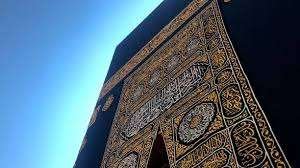
Islamic calligraphy holds profound cultural significance within the Islamic world, serving as a unique and powerful expression of faith, identity, and artistic heritage. Rooted in the deep reverence for the Quran, Islamic calligraphy is considered more than just a visual art form; it is a sacred practice that embodies the divine word. The importance of the written word in Islam, where the Quran is viewed as the literal word of Allah, has elevated Islamic calligraphy to a position of great respect and reverence. This art form is not merely decorative but is a means of transmitting spiritual and religious messages, often seen as a bridge between the material and the spiritual worlds.
Islamic calligraphy has played a central role in the architectural and artistic expressions of the Islamic world. It adorns mosques, palaces, and other significant buildings, often in the form of inscriptions that convey religious texts, prayers, or verses from the Quran. These inscriptions are integrated into the very structure of the buildings, enhancing their spiritual atmosphere and serving as a constant reminder of the presence of Allah. The use of Islamic calligraphy in architecture is not limited to religious buildings; it also extends to palaces, schools, and public spaces, reflecting the pervasive influence of this art form in everyday life.
Beyond architecture, Islamic calligraphy is deeply embedded in the visual arts, influencing various artistic traditions across the Islamic world. It has been incorporated into painting, ceramics, textiles, and metalwork, often serving as a central motif or decorative element. The integration of Islamic calligraphy into these art forms reflects its cultural significance as a symbol of identity and continuity. Artists throughout history have used calligraphy to convey not only religious messages but also themes of love, wisdom, and philosophy, demonstrating its versatility and depth.
Islamic calligraphy has also served as a vehicle for cultural exchange and communication across the diverse regions of the Islamic world. As Islam spread across different cultures and languages, calligraphy became a unifying artistic language that transcended linguistic and cultural barriers. The various styles of Islamic calligraphy, such as Kufic, Naskh, Thuluth, and Diwani, developed in different regions, reflecting local traditions and influences while maintaining a connection to the broader Islamic cultural heritage. This adaptability and diversity have allowed Islamic calligraphy to flourish in different cultural contexts, from the Arab world to Persia, India, and beyond.
The cultural significance of Islamic calligraphy is also evident in its role in education and scholarship. In the Islamic tradition, learning to read and write the Quran is a fundamental part of religious education, and calligraphy is an integral aspect of this process. The practice of copying the Quran by hand, often in beautiful calligraphic script, is seen as a devotional act and a means of preserving the sacred text. Islamic calligraphy has also been used in the production of other important texts, including poetry, scientific treatises, and legal documents, underscoring its importance in the intellectual and cultural life of the Islamic world.
In contemporary times, Islamic calligraphy continues to be a vital cultural expression, evolving and adapting to new contexts while remaining deeply rooted in tradition. Modern artists and calligraphers have explored new mediums and techniques, bringing Islamic calligraphy into the realm of digital art, graphic design, and contemporary fine art. Despite these innovations, the cultural significance of Islamic calligraphy remains unchanged, as it continues to be a powerful symbol of Islamic identity, spirituality, and artistic heritage.
Islamic calligraphy represents a unique convergence of art, religion, and culture, embodying the core values and beliefs of the Islamic world. Its enduring significance is a testament to the deep respect for the written word in Islam and the ability of this art form to convey profound spiritual and cultural messages across time and space.
12. Famous Calligraphers and Their Contributions
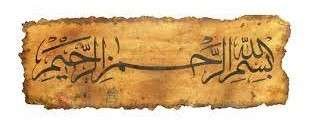
Islamic calligraphy has been shaped and elevated by numerous renowned calligraphers throughout history, each contributing to the development, refinement, and preservation of this esteemed art form. Their work has left a lasting impact on Islamic culture, influencing generations of artists and calligraphers across the Islamic world.
One of the earliest and most influential figures in Islamic calligraphy is Ibn Muqlah (886–940 CE), often considered the father of Islamic calligraphy. Serving as a vizier in the Abbasid Caliphate, Ibn Muqlah is credited with codifying the principles of proportion and geometry in calligraphy. He developed the six canonical scripts, including Naskh and Thuluth, which became the foundation for Islamic calligraphy. His system of proportions, based on the concept of the “dot” (a measurement derived from the width of the qalam’s nib), established a standard for the balance and harmony of letters that continues to influence calligraphy to this day.
Following Ibn Muqlah, Ibn al-Bawwab (died 1022 CE) emerged as another significant figure in the history of Islamic calligraphy. He was a master of the scripts developed by Ibn Muqlah and further refined them, particularly Naskh, which he popularized for copying the Quran. Ibn al-Bawwab was known for his exquisite penmanship and his ability to produce beautifully balanced and proportioned letters. His work elevated the aesthetic quality of Quranic manuscripts, setting a standard for later generations of calligraphers.
Yaqut al-Musta’simi (died 1298 CE) is another legendary figure in the world of Islamic calligraphy. Serving as the official calligrapher to the last Abbasid caliph, Yaqut is often credited with perfecting the six canonical scripts, particularly Thuluth and Muhaqqaq. He introduced subtle changes in the angles and curves of letters, enhancing their elegance and fluidity. Yaqut’s work was highly respected, and he trained many students who spread his techniques throughout the Islamic world. His influence was so profound that his style became the gold standard for centuries.
In the Ottoman Empire, Sheikh Hamdullah (1436–1520 CE) stands out as a monumental figure in the history of Islamic calligraphy. Known as the “master of calligraphy,” Sheikh Hamdullah was instrumental in developing the Ottoman school of calligraphy. He is credited with refining and standardizing the Thuluth and Naskh scripts, adapting them to suit the tastes and needs of the Ottoman elite. His work adorned mosques, palaces, and official documents, and his style became the model for Ottoman calligraphers for generations. Sheikh Hamdullah’s influence extended beyond his lifetime, and his teachings were preserved and propagated by his students, ensuring the continuity of his style.
Another important Ottoman calligrapher was Hafiz Osman (1642–1698 CE), who is often regarded as one of the greatest Islamic calligraphers of all time. Hafiz Osman was a master of the Thuluth and Naskh scripts and made significant contributions to the art of Quranic transcription. His style is characterized by its clarity, precision, and elegance. Hafiz Osman’s works are highly prized, and he is credited with refining the Ottoman calligraphic tradition, making it more accessible and widely recognized. His influence was so profound that his style became the dominant form of Islamic calligraphy in the Ottoman Empire and beyond.
In Persia, Mir Emad Hassani (1554–1615 CE) is celebrated as one of the most influential calligraphers of the Safavid period. He was a master of the Nasta’liq script, a highly ornate and fluid script that became the dominant style for Persian poetry and literature. Mir Emad’s work is renowned for its grace, beauty, and perfect proportions. His calligraphy was not only an artistic achievement but also a cultural symbol, representing the refined tastes of the Safavid court. Despite his tragic assassination, Mir Emad’s legacy endured, and his style continued to inspire Persian calligraphers for centuries.
In the Indian subcontinent, the Mughal emperor Humayun’s court calligrapher, Mir Ali Tabrizi (died 1545 CE), played a crucial role in the development of the Nasta’liq script. Although originally from Persia, Mir Ali Tabrizi’s work had a lasting impact on Mughal calligraphy, influencing the style of manuscripts and official documents in the region. His adaptation of Nasta’liq to suit the Mughal aesthetic preferences made the script a defining feature of Mughal art and architecture.
In modern times, the Iraqi calligrapher Hashim Muhammad al-Baghdadi (1917–1973) is widely regarded as one of the most important figures in the revival of traditional Islamic calligraphy. Hashim al-Baghdadi was a master of multiple scripts, including Thuluth, Naskh, and Diwani, and his work is characterized by its precision, clarity, and adherence to classical principles. He played a pivotal role in the modern calligraphic movement, teaching and inspiring a new generation of calligraphers who sought to preserve and revitalize the art form in the 20th century.
These famous calligraphers and their contributions have shaped the course of Islamic calligraphy, ensuring its preservation and continued evolution. Their mastery of technique, innovation, and commitment to the art form have left an indelible mark on Islamic culture, making Islamic calligraphy not only an artistic tradition but also a symbol of cultural and spiritual identity across the Islamic world.
13. Islamic Calligraphy in Contemporary Art
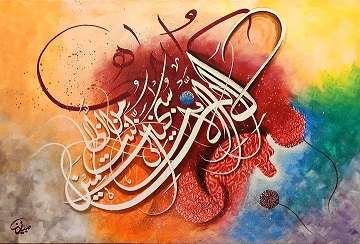
Islamic calligraphy in contemporary art represents a dynamic and evolving tradition that bridges the rich heritage of classical calligraphy with modern artistic expressions. As artists across the Islamic world and beyond explore new mediums, techniques, and concepts, Islamic calligraphy continues to be a powerful symbol of cultural identity, spirituality, and creativity. The integration of Islamic calligraphy into contemporary art reflects a desire to both preserve and reinterpret this ancient art form in ways that resonate with modern audiences.
In the 20th and 21st centuries, Islamic calligraphy has found a prominent place in the global art scene, with artists using it to explore themes of faith, identity, and social commentary. This renewed interest in calligraphy has led to the development of new styles and approaches that push the boundaries of traditional practice. Artists are experimenting with diverse materials, from traditional ink and paper to canvas, digital media, and even installations, allowing Islamic calligraphy to reach new audiences and contexts.
One significant trend in contemporary Islamic calligraphy is the use of abstract and semi-abstract forms. Artists such as El Seed, a Tunisian-French street artist, have gained international recognition for their work that blends calligraphy with graffiti art. El Seed’s murals, which often feature intricate calligraphic scripts intertwined with bold colors and abstract shapes, challenge conventional notions of Islamic calligraphy while making powerful social and political statements. His work exemplifies how contemporary artists are reimagining calligraphy as a form of public art that can engage with urban environments and diverse communities.
Another prominent figure in contemporary Islamic calligraphy is the Syrian artist Khaled Al-Saa’i, known for his innovative use of color and form. Al-Saa’i’s work often merges traditional calligraphic elements with abstract expressionism, creating compositions that evoke the spiritual and emotional depth of Islamic calligraphy while embracing the spontaneity and freedom of modern art. His approach demonstrates how contemporary artists can honor the spiritual essence of Islamic calligraphy while pushing its visual language into new realms.
In the realm of digital art, artists like eL Seed and Nja Mahdaoui have embraced technology to expand the possibilities of Islamic calligraphy. Mahdaoui, a Tunisian artist, is celebrated for his calligraphic compositions that blend traditional scripts with modern design techniques, often using computer software to create intricate patterns and designs. His work blurs the line between calligraphy and visual art, offering a fresh perspective on how Islamic calligraphy can be adapted to suit the digital age. The use of digital tools has allowed artists to experiment with scale, repetition, and layering in ways that were not possible with traditional methods, leading to a new wave of innovation in calligraphy.
Islamic calligraphy in contemporary art is also deeply connected to cultural identity and the diaspora experience. Artists like Aisha Khalid, a Pakistani contemporary artist, explore the intersection of Islamic calligraphy and personal narratives. Khalid’s work often incorporates calligraphic elements into larger compositions that address themes of identity, gender, and cultural memory. Her use of calligraphy as both a decorative and symbolic element reflects a broader trend among contemporary artists who seek to connect with their heritage while addressing the complexities of modern life.
In addition to individual artists, Islamic calligraphy has also found a place in contemporary architectural design. Modern architects and designers are incorporating calligraphic elements into buildings and public spaces, creating works that blend tradition with innovation. For example, the Sheikh Zayed Grand Mosque in Abu Dhabi features modern interpretations of classical calligraphy, integrated into the mosque’s marble walls, domes, and minarets. This fusion of old and new demonstrates how Islamic calligraphy continues to inspire and enhance contemporary design, offering a visual link between past and present.
The global nature of contemporary art has also allowed Islamic calligraphy to transcend cultural and geographic boundaries. Artists from non-Islamic backgrounds have been drawn to the aesthetic and spiritual qualities of Islamic calligraphy, incorporating it into their work in ways that highlight its universal appeal. This cross-cultural exchange has enriched the dialogue surrounding Islamic calligraphy, bringing new perspectives and interpretations to the art form.
Furthermore, contemporary Islamic calligraphy often engages with issues of social justice and political activism. Artists like Hassan Massoudy, an Iraqi calligrapher and painter, use calligraphy to convey messages of peace, tolerance, and human rights. Massoudy’s work, which combines calligraphic text with vibrant colors and bold compositions, serves as a visual commentary on contemporary social issues, demonstrating the power of calligraphy to communicate beyond the written word.
Islamic calligraphy in contemporary art is a testament to the enduring relevance and adaptability of this ancient tradition. While deeply rooted in history, contemporary artists are continually reinventing Islamic calligraphy, using it to explore new ideas, address modern challenges, and connect with audiences across the world. This ongoing evolution ensures that Islamic calligraphy remains a vibrant and meaningful expression of cultural and spiritual identity in the 21st century.
14. Learning Islamic Calligraphy: Tips and Resources
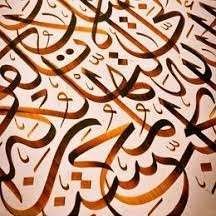
Learning Islamic calligraphy is a rewarding journey that combines artistic skill, cultural appreciation, and spiritual practice. For those interested in mastering this ancient art form, understanding the techniques, tools, and traditions is essential. Islamic calligraphy requires patience, discipline, and a deep respect for the written word, but with the right guidance and resources, beginners can gradually develop their skills and create beautiful, meaningful works.
The first step in learning Islamic calligraphy is to familiarize yourself with the basic tools of the craft. The primary tool is the qalam, a reed pen that is cut at an angle to produce varying line thicknesses. Learning how to properly cut and prepare the qalam is a fundamental skill in Islamic calligraphy. The type of qalam and the angle of the cut will vary depending on the script being practiced. In addition to the qalam, high-quality ink is essential, traditionally made from natural materials like soot and gum arabic. Modern calligraphers often experiment with different types of ink, including colored inks and gold leaf for decorative purposes. Smooth, high-quality paper or parchment is also important, as the surface must allow the qalam to glide smoothly.
Understanding the different scripts is another crucial aspect of learning Islamic calligraphy. There are several styles, each with its unique characteristics and uses. Beginners often start with the Naskh script, known for its clarity and legibility, making it ideal for copying the Quran. Thuluth, with its large, elegant curves, is often used in architectural inscriptions and more advanced compositions. Kufic, one of the oldest scripts, is characterized by its angular, geometric shapes and is commonly used for decorative purposes. As you progress, you may explore other scripts like Diwani, known for its elaborate flourishes, and Nasta’liq, favored for Persian poetry.
One of the most important tips for learning Islamic calligraphy is to start with proper instruction. Finding a skilled teacher or mentor is invaluable, as they can provide personalized guidance and feedback. Many traditional calligraphy schools offer courses where students can learn the craft under the supervision of experienced calligraphers. If in-person instruction is not available, there are also numerous online courses and tutorials that cater to beginners. These resources often include video lessons, practice sheets, and step-by-step instructions, allowing students to learn at their own pace.
Practice is essential in Islamic calligraphy. It is recommended to begin by practicing basic strokes and individual letters before moving on to complete words and sentences. This helps build muscle memory and familiarity with the qalam’s movements. Using grid paper or guidelines can aid in maintaining consistent proportions and spacing, which are crucial for achieving balance and harmony in calligraphic compositions. Repetition is key, so practicing each letter or phrase multiple times will help develop precision and control.
Studying the works of master calligraphers is another valuable resource for learners. By examining their techniques, compositions, and use of space, beginners can gain insight into the subtleties of Islamic calligraphy. Many historical manuscripts, Quranic copies, and calligraphic panels are available in museums and online archives, providing a wealth of material for study. Some learners find it helpful to trace over these works as a way to internalize the forms and proportions before attempting to replicate them independently.
Joining a community of fellow calligraphy enthusiasts can also be beneficial. Many cities have calligraphy societies or workshops where learners can share their work, receive feedback, and learn from others. Online forums and social media groups dedicated to Islamic calligraphy offer additional opportunities to connect with other learners and professionals, exchange tips, and seek advice. These communities can provide encouragement and inspiration, helping to keep the learning process engaging and enjoyable.
Understanding the cultural and spiritual significance of Islamic calligraphy is equally important. This art form is deeply intertwined with Islamic culture and history, and learning about its origins, development, and uses in different contexts can enhance your appreciation and understanding. Reading books and articles on the history of Islamic calligraphy, as well as studying the Quran and other religious texts, can provide valuable insights into the meanings and symbolism behind the calligraphic forms.
In addition to traditional methods, experimenting with modern techniques and materials can be an exciting way to expand your skills. Many contemporary calligraphers blend classical calligraphy with modern art forms, using acrylics, digital tools, and mixed media to create innovative compositions. While it is important to master the basics, exploring new approaches can help you develop a personal style and push the boundaries of traditional calligraphy.
Lastly, patience and perseverance are key in learning Islamic calligraphy. Mastery of this art form takes time, and progress may be slow, especially in the beginning. However, by approaching the practice with dedication and an open mind, learners can gradually refine their skills and achieve a deeper connection with the art.
In summary, learning Islamic calligraphy requires a combination of technical practice, cultural understanding, and creative exploration. With the right tools, instruction, and resources, along with a commitment to consistent practice, anyone can begin their journey into this beautiful and spiritually enriching art form.
15. Conclusion: The Timeless Appeal of Islamic Calligraphy

Islamic calligraphy stands as one of the most enduring and revered art forms in the world, its timeless appeal rooted in both its spiritual significance and its aesthetic beauty. The intricate and harmonious designs of Islamic calligraphy transcend mere decoration, embodying a deep connection to the divine word and the cultural heritage of the Islamic world. This art form has flourished for over a millennium, adapting to various historical, cultural, and geographic contexts while maintaining its core principles and traditions.
One of the key factors contributing to the timeless appeal of Islamic calligraphy is its unique ability to blend form and meaning. Unlike other visual arts, where form is often separate from content, Islamic calligraphy unites the two, with the script itself conveying both linguistic meaning and artistic expression. This duality gives Islamic calligraphy a profound depth, allowing it to communicate spiritual messages while also serving as a vehicle for creative exploration. The words of the Quran, prayers, and other religious texts are brought to life through the calligrapher’s skill, transforming them into visual symbols of faith.
The adaptability of Islamic calligraphy has also played a significant role in its enduring popularity. Over the centuries, this art form has evolved and diversified, giving rise to various styles and scripts, each with its distinct characteristics and applications. From the geometric precision of Kufic to the flowing elegance of Thuluth and Naskh, Islamic calligraphy has shown a remarkable capacity to innovate while remaining rooted in tradition. This ability to evolve has allowed Islamic calligraphy to remain relevant and meaningful across different cultures and eras, from the early Islamic period to the present day.
Islamic calligraphy’s appeal is further enhanced by its integration into everyday life and its prominence in architectural and decorative arts. From the grand inscriptions adorning mosques and palaces to the delicate calligraphy found on ceramics, textiles, and manuscripts, Islamic calligraphy has left an indelible mark on the visual culture of the Islamic world. Its presence in both sacred and secular spaces underscores its significance as a cultural and artistic symbol, one that continues to inspire and captivate audiences.
In contemporary times, Islamic calligraphy has not only preserved its traditional forms but has also expanded into new artistic domains. Modern artists and calligraphers are exploring innovative ways to reinterpret and reimagine Islamic calligraphy, blending it with other art forms, media, and technologies. This fusion of old and new ensures that Islamic calligraphy remains a vibrant and dynamic art form, resonating with both traditionalists and modernists alike.
The spiritual dimension of Islamic calligraphy also contributes to its timeless appeal. For many practitioners and admirers, engaging with Islamic calligraphy is not just an artistic endeavor but a form of worship and devotion. The process of creating calligraphy, with its emphasis on precision, rhythm, and harmony, is often seen as a meditative practice that connects the artist to the divine. This spiritual aspect endows Islamic calligraphy with a significance that goes beyond aesthetics, making it a deeply meaningful and revered art form.
In conclusion, the timeless appeal of Islamic calligraphy lies in its unique fusion of form and meaning, its adaptability across cultures and eras, its integration into daily life and architecture, and its spiritual significance. As a living tradition that continues to evolve and inspire, Islamic calligraphy remains a powerful expression of cultural identity, spiritual devotion, and artistic excellence. Its enduring beauty and relevance ensure that it will continue to captivate and resonate with people around the world for generations to come.
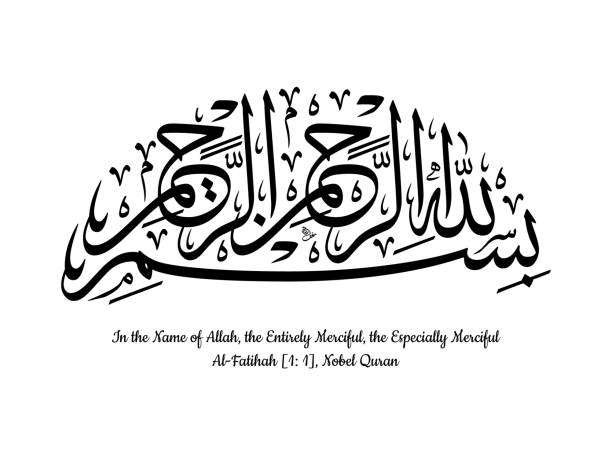
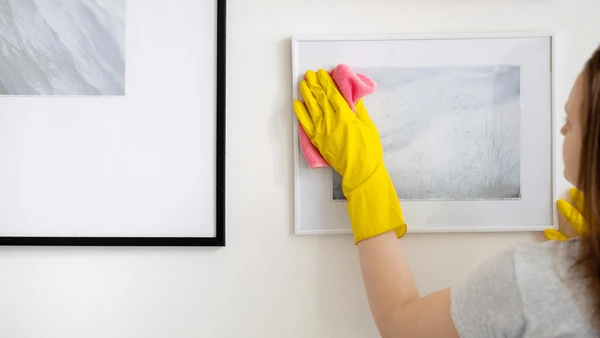
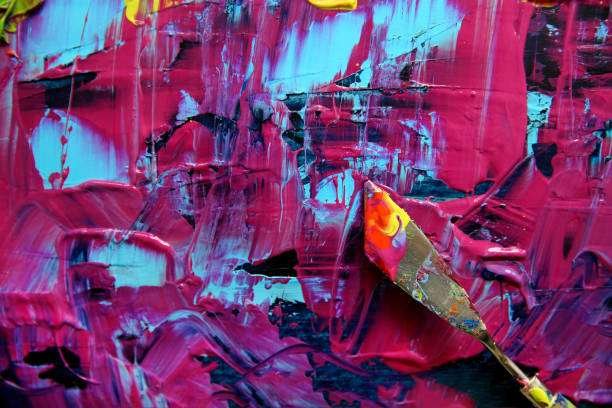

11 Comments
Aap ne Islamic calligraphy ke evolution ko itni khoobsurti se samjhaya hai. Zabardast kaam!
Is blog ne mujhe Islamic calligraphy ke bare mein itni gehri maloomat di. Shukriya.
Islamic calligraphy ki khoobsurti aur unke styles ka itna acha overview diya hai. Dil khush hogaya!
Islamic calligraphy ke styles aur techniques ke bare mein aise detail mein pehli baar padha hai. Bohat acha likha!
This blog is a masterpiece itself, shedding light on the artistic heritage of Islamic calligraphy.
This article deepened my appreciation for Islamic calligraphy. Keep up the excellent work!
The blend of tradition and innovation in Islamic calligraphy is truly inspiring. Loved reading this!
Aap ka likhne ka andaaz aur information dene ka tareeqa lajawab hai. Behtareen blog!
Yeh blog Islamic calligraphy ke husn aur tazeen ko samajhne mein madadgaar hai. Bohat shandar!
The way you described the evolution of Islamic calligraphy is remarkable. It’s a treasure of knowledge!
This blog beautifully explains the rich history and styles of Islamic calligraphy. Truly inspiring!